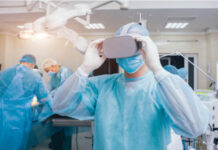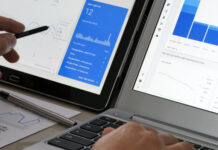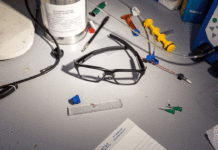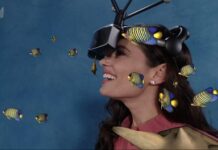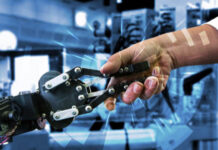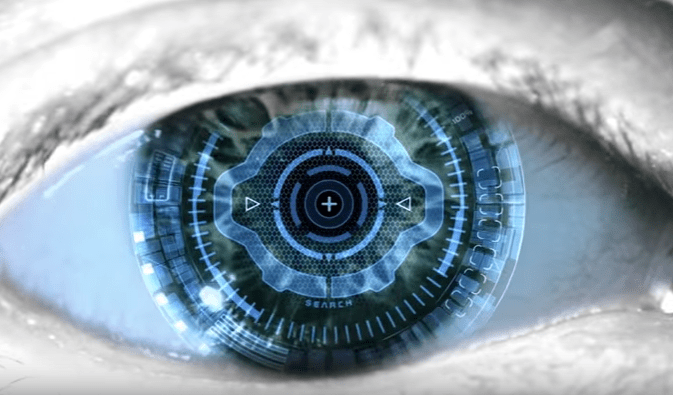
A few years ago Pokémon Go made headlines all over the world when it produced a mobile game that allowed users to ‘capture’ and ‘collect’ Pokémon in their areas. On the day of release in 2016 about 130 million people from all over the world have downloaded it. In 2020 there are about 67 million active users in the USA. This so-called capturing and collecting of Pokémon stretched further than just that. Users could guide the virtual Pokémon in the real world and the Pokémon would react according to its surroundings.
This interaction between virtual elements and the physical world is displayed on the app which is the perfect example of mixed reality technology. Today MR is not only reserved for games. It is also integrating into professional fields of business as part of digital transformation initiatives. According to Harvard Business Review Analytic Services’ survey, Mixed Reality: A New Dimension of Work, almost 90% of businesses have started exploring the possibilities of implementing MR while 69% of businesses believe that MR is crucial to reaching their goals. Even though these technologies are at an early stage, it has enormous potential in the business sector.
Understanding MR is to understand its foundation which is virtual and augmented reality. It is important to discriminate between the two terms. Even though they are similar, they are not the same thing. VR replaces the user’s experience, by putting them in a virtual world. AR, on the other hand, inserts virtual information into the individual’s real-world setting by using the physical world as a type of canvas. One is transportive and the other is trans-formative. In the middle of these two terms is where we find MR technology.

What is mixed reality?
MR is a type of technology that combines aspects of both AR and VR. Both have had several decades to develop (dating back to the mid-1800s) the first appearance of MR was only in 1994 meaning that it is millennial. The term was first discussed in a paper titled A Taxonomy of Mixed Reality Visual Displays by Paul Milgram and Fumio Kishino. The paper introduced the idea of a virtual continuum which was defined as “the mixture of classes of objects presented in any particular display situation, where real environments, are shown at one end of the continuum, and virtual environments, at the opposite extreme.”
Keeping the concept of a virtual continuum in mind, mixed reality can thus be described as a mixed reality environment where real-world objects and virtual objects are presented together within a single display. It falls anywhere along the virtual continuum. People often confuse MR with AR or VR. They are not entirely wrong. The most important thing to get about MR technologies is that it makes use of AR and VR aspects at the same time. That way a brand new experience can be created.
Benefits of mixed reality for business:
Mixed reality is still fairly new, there are not many businesses using it as part of their processes or planning. There also are not as many MR business applications available to businesses. The applications that do exist are still in its experimental phases and these are mainly focused on manufacturing and the medical industries.
Manufacturing industries: MR can be very useful when it comes to architectural scenarios especially when it comes to the placement of machines in a factory. Users can, for example, hold up a smartphone or a tablet screen to an area of the factory to see virtual mock-ups for machinery. The technology also helps with worker training and instruction. An example would be workers using a headset to receive interactive instructions on how to operate machinery while on the factory floor. They can remotely communicate with supervisors while carrying out a task. They can also undergo training programs safely before executing business operations. AR and VR technologies also shorten repair cycle times allowing staff to be trained remotely without them being present. This will allow the business to constantly retrain and up skill senior workers without spending too much time or money on expensive resources.
Medical industries: Medical students are taking advantage of MR technologies. It allows them to practice surgeries in a controlled environment. MR provides them with a visualization of the operating room as well as an interactive experience where they can test the skills they have learned without putting anyone at risk. It also allows for remote collaboration between colleagues. Microsoft recently announced the evolving development of Holoportation, which allows individuals with MR devices to see and interact remotely with other colleagues. These technologies are still in the early stages of development. It is already showing a lot of promise.
How do mixed reality devices work?
MR is most commonly accessed through a headset that users place on their heads to look through their surroundings. The headset then allows them to see the virtual objects that have been “placed” in reality. It allows them to look at the environment by turning their heads. They can also interact with the objects using hand gestures or hand controllers. This is where AR and VR features become vital in the success of MR technologies. Without these elements, the experience will fail dismally causing the user to reject it.
In AR technologies, content is displayed to match the real-world environment. When the user navigates, it is just like he would navigate himself through his physical surroundings. In VR the room-scale does allow for some movement, a guardian system has to track the available clear space. Here the focus is not just on visuals, also on audio that has to be produced. Before these technologies could be accessed via hands-free devices, VR and AR mostly involved flat screens through keyboards or touch-oriented systems. MR does not require touch at all. Users interact with the digital and physical world directly.
Best headsets for business:
Even though MR headsets are still in the experimental phases, there are a few headsets that have been used in businesses, even more devices are being patented for future development.
Microsoft HoloLens: The latest headset addition from Microsoft, the HoloLens 2, features Qualcomm’s Snapdragon 850 compute engine as well as a custom artificial intelligence holographic co-processor. This device is aimed specifically at business customers and more importantly first-line workers. The HoloLens 2 has a flip-up visor, a large vertical field of view, articulated tracking for hand and eye movement. Pricing starts at $3,500.
Magic Leap One: The Magic Leap One headset was released in 2018 and has been implemented by several businesses with relative success. It is described as a spatial computing system in the form of connected goggles with a Light pack or an attached processing unit controlled with a handheld touch pad. The pricing starts at $2,295 and the smart glasses are even available with prescription lenses.
RealWear HMT-1: The RealWear HMT-1 was the winner of the Best Head worn Device at the 10th annual Augmented World Expo. It features a rugged headset aimed specifically at enterprise workers in the field. The device provides information related to the task like data or manuals for hands-free engineering for tasks in and around the warehouse. The device is straightforward and pricing starts at $1,500.
Oculus Quest: This headset has been developed by Facebook and has been successfully used for enterprise training as proven by Walmart. It is especially beneficial for businesses. It offers the Oculus for Business Software. This software suite includes device setup & management tools, enterprise-grade service, and customized new-user experience. The device is the cheapest on the market with a price of $399.
According to experts, MR technologies are the latest advancements in the AR/VR world. It is expected to have a long-lasting impact on the way people do business. It shows how the real and the digital world can come together seamlessly to provide endless possibilities when it comes to business solutions. From social media filters to training applications – this is only the beginning of MR technologies. Experts have noted that businesses should not be fooled by the entertainment aspect of MR. It is said,”to have a lot of potential to change the very structure of a business. This is still up for debate.”
Many other experts argue that MR’s potential can be limited. It may have a smaller market than AR. There are not as many casts available that show how essential it is for the digital to interact with the physical. As MR markets continue growing and developing more devices are being released, businesses might be drawn to it’s potential. They may adopt the technology more widely. In the meantime, the gaming community is already benefiting from its entertainment aspect. As far as business enterprises go, only time will tell how successful it will be.
References:
Bayern, Macy: Your Guide to Mixed Reality Technology, ZDNet, 2 October 2019. zdnet

